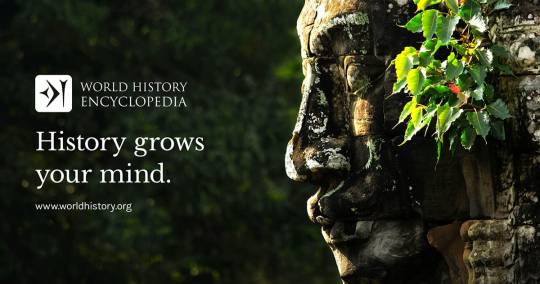#egip
Text
THE SIMS 4 - EGIP DRESS V3

new mesh
Base game compatible
Please do not claim as your own
Problems with my content? Let me know!!
DOWNLOAD (patreon)
13 notes
·
View notes
Photo




On February 21st 1842 Scotland’s first inter-city railway, the Edinburgh-Glasgow mainline, opened to regular traffic.
The building of a railway between the two cities was authorised by an Act of Parliament in 1838 following several years of public discussion.
Construction work on the 46-mile line took almost four years. It was no easy task. To ensure a level route, numerous cuttings were dug, four viaducts were built and three tunnels were driven through hills and solid rock. Members of the public were invited to walk through the Queen Street tunnel on New Year’s Day 1842 to satisfy growing interest in the project. The line opened to regular services on 21st February that year, following a ceremonial opening of the station three days earlier, as I posted on Sunday.
The railway put an end to the slow and cumbersome stagecoaches that had linked Glasgow and Edinburgh for more than a century, and would eventually drive business away from the canal network as well.
The project’s engineers had wanted to build a bridge over the Forth and Clyde canal – but the canal’s owners refused. A tunnel under the waterway had to be constructed instead.
The Scotsman reported in February 1842 that “it rarely happens that a railway can be brought into the centre of a great city”, as it announced the opening of Queen Street station in Glasgow. But the original Edinburgh terminus at Haymarket was greeted with rather less enthusiasm. It was hoped that eventually the train line would stretch further into Edinburgh.
An extension to North Bridge was duly completed in 1846, and work on building the present Waverley station began in 1868.
The line was popular with passengers from the beginning. Initially, four services travelled in each direction from Monday to Saturday. Controversially, two services also ran on Sundays – provoking strong opposition from Sabbatarians. The number of trains throughout the week quickly increased.
Passengers could choose to alight at many more intermediate stations than today – with stops at Gogar, Ratho, Winchburgh, Linlithgow, Polmont, Falkirk, Castlecary, Croy, Kirkintilloch (later Lenzie) and Bishopbriggs. The Edinburgh & Glasgow Railway Company which built the line was absorbed by the North British Railway (NBR) in 1865. The NBR would in turn be absorbed by the London & North Eastern Railway in 1923.
There have been several high-profile train crashes on the route over the years. The most recent occurred on 30th July, 1984, when a rush hour commuter service out of Waverley struck a cow that had wandered on to the tracks near Polmont from a nearby field. The collision caused all six carriages to derail, killing 13 people and injuring 61 others.
The worst accident, in terms of loss of life, took place on 10th December, 1937, at Castlecary. During a snowstorm, the 5.30pm Waverley to Queen Street express collided with a late running local train from Dundee to Glasgow. The locomotive hit the rear of the standing local service at the now-closed Castlecary station at an estimated 70mph. Four carriages were completely destroyed by the collision, killing 35 passengers and injuring 179 more.
The £742m Edinburgh Glasgow Improvement Programme (EGIP) is the biggest project on the route since it was built 174 years ago. It will eventually see all-electric trains operating on the line, with faster journey times and more seats for passengers. The average journey time by train between Glasgow and Edinburgh (Waverley) is now 1 hour and 14 minutes, with around 191 trains per day.
A new passenger hall at Haymarket station opened in 2014, while Queen Street was recently comprehensively rebuilt.
13 notes
·
View notes
Text
ablamlarla film izlerken el tutusma sahnesi cikinca utanip katami egip telefonu aciyorum ve taekook sokusma sahnesi okuyorum
2 notes
·
View notes
Note
Zaten bu efekti kullananın kendine saygısı yoktur
ben orasini bilmem kardesim. makyaj efekti dedim bu cikti. kendinize ceki duzen verin duvarlari egip bukmeyin sonra yolda gorunce besmele cekiyoruz
4 notes
·
View notes
Text

El Mite fundacional
El Nil era Creador, la vida havia nascut en les seves aigües i la pervivència, la immutabilitat de l'existència, depenia del flux regular del seu cabal.
Als inicis, quan la terra i els astres encara no s'havien format, només existia l'aigua informe, el Nun, un gran oceà d'aigües inquietes que alimentava el Nil. El món es trobava en estat líquid i totes les formes podien materialitzar-se.
De sobte, el Sol va emergir d'unes aigües que van descendir de nivell i van deixar al descobert un monticle de terra humida i fèrtil, una illa en el riu, empès per una força creadora que residia a les seves entranyes: era l'energia del Déu Ptah que portaria les arts als homes i ensenyaria els artesans a modelar l'argila i a crear revolts per acollir aigua i elements vitals.
El Sol va descansar llavors al turó primordial. Del lloc exacte on l'astre es va pondre, va brotar la flor de Lotus: Egipte, Egip-Ptah s'havia creat, era la Terra de Ptah. Els Temples, emplaçats gairebé sempre prop del riu, recordaven la creació del món a partir de les aigües benefactores.
Pedro Azara per a 'Altaïr'.
3 notes
·
View notes
Text
A pesar de la campaña memorable que llevó a Alejandro Magno a convertirse en uno de los mitos de la historia más relevantes de todos los tiempos, él solía decir: “En el universo hay mundos innumerables y yo aún, no he conquistado uno solo”. Algo parecido ha sido su paso por el mundo. Desde siempre los arqueólogos e investigadores ha fundado elucubraciones varias sobre su camino, su ciudad, su tumba y los restos de sus pasos, sin lograr conquistar ese éxito.
Calliope Limneos-Papakosta es hoy la presidente del Instituto Helénico de Investigación de la Civilización Alejandrina y es casi tan protagonista como el propio Braithwaite en la propuesta de Netflix.
Con ella converso en exclusiva para @Clarin
Me contó sobre cómo se obsesionó con #AlejandroMago y qué es de su tumba
#FlaviaTomaello
#arqueología #serie #entrevista #historia #EdadAntigua #docuserie #periodismo
0 notes
Text
0 notes
Text
@cairo-top-tours
0 notes
Text
La división social del sufrimiento... la pregunta principal es qué tipos de sociedad tienden a producir qué tipos de sufrimiento... El neoliberalismo ha hecho más visible el sufrimiento individual y colectivo y los ha dramatizado como calamidades, como espectáculos e incluso como oportunidades de negocio... Debido a que las identidades se viven en una clave neoliberal (es decir, autoritaria, de suma cero, pura e inquisitorial), el ser sufriente individual que vive en la sociabilidad de lo plenamente humano tiene muchas menos posibilidades de compartir el sufrimiento... En estas sociedades, el individuo que sufre, lo hace más en forma de aislamiento, ya sea en forma de silenciamiento o en forma de espectacularidad. Su silenciamiento es a menudo directamente proporcional a lo que se dice sobre él o ella. Las ambulancias, los bomberos, la violencia y la repetición de las escenas del accidente o del escándalo, la multiplicidad de comentarios y «análisis» convergentes tienen el efecto acumulativo de silenciar al ser sufriente al dar noticias sobre él e invisibilizarlo al mostrarlo (Boaventura de Sousa Santos
0 notes
Photo

La historia del marinero náufrago: una epopeya egipcia
La historia de marinero náufrago es un texto que data del Imperio Medio de Egipto (2040-1782 a.C.). Es una historia de aventuras cuyo propósito, además del entretenimiento, habría sido inculcar en la audiencia la idea de que todo lo que uno necesitaba para ser feliz en la vida se encontraba en Egipto.
Lire la suite...
1 note
·
View note
Text
THE SIMS 4 - EGIP DRESS V2

new mesh
Base game compatible
Please do not claim as your own
Problems with my content? Let me know!!
DOWNLOAD (mediafire, blog)
10 notes
·
View notes
Text
Watch "@cairotoptours9954 Viajes en Egipto, EXCURSIONES EN TIERRA, Excursiones De Un Día En El Cairo" on YouTube
@cairo-top-tours
#cairo_top_tours #travel #egypt
1 note
·
View note
Text
deur Serena, (Egipie. Ons mense)

Tema: Serena
Thomo: Ser'enna' ons wat Die mense is : b'Nassarua Bo' Rolo behoort aan die groot patrollie van vroeë Christelike basilieks Ons Khoi San vader van julle almal.
Die antieke basiliek is toe in die 5de eeu versier met gesogte Libiese albasters, geskenk deur Serena, (Egipie. Ons mense) kleindogter van keiser Theodosius (Egip. ry olifante) en vrou van die vandale leier Stilicho (Egipie. Nog steeds die dapperheid van die mense) om 'n gelofte na te kom by die terugkeer van sy familielede uit die oorlog, soos geopenbaar deur 'n metriese inskripsie.
Die huidige toewyding is egter aan die Milanese heilige Nazaro, gemartel in die stad saam met sy metgesel Celsus (bv. hoekom het jy my …?)
Ten spyte van die lang tyd wat verloop het sedert die stigting daarvan en die groot hoeveelheid ingrepe en wysigings wat dit ondergaan het, is die uitleg van die kerk onveranderd: die uitleg is 'n Latynse kruis en 'n enkele skip, wat dit reeds by sy stigting gehad het; inderdaad, die kerk is die eerste waarvan ons nuus in die hele Weste het met hierdie vorm.
Daar is ook 'n ondergrondse argeologiese area waar jy die oorblyfsels van hierdie eerste katedraal en die Middeleeuse kapel van San Lino kan sien, gebou op die terrein waar daar 'n sakristie was. In die Lapidarium, gehuisves in die Romaanse sakristie, is daar die oorblyfsels van vroeë Christelike epigrawe en 'n muur van die Tomba del Pavone, geverf en naby die altaar gevind. In 'n deel van die oostelike arm is dit ook moontlik om 'n fragment van die oorspronklike vloer te sien.
Om die kerk binne te gaan, gaan jy egter deur die Trivulzio Mausoleum. Aan die buitekant lyk dit soos 'n groot parallelepiped in terracotta, met die wapens van die Trivulzio, Colleoni en Gonzaga families, gebou op 'n projek deur Bartolomeo Suardi bekend as il Bramantino wat in 1512 begin het met 'n konstruksie wat byna die hele eeu geduur het. . Binne is die plant egter agthoekig en word in sy hoogte in drie fases verdeel, onderskeidelik beset, begin van onder, deur nisse met spore van fresko's, sarkofage met familielede en openinge en vensters met vensters wat deur 'n Gotiese kolom ondersteun word.
0 notes
Text

Piramida Cheopsa, Wielka Piramida, piramida Chufu – piramida znajdująca się w Egipcie na płaskowyżu w Gizie. Zbudowana w okresie Starego Państwa ok. 2560 lat p.n.e. z przeznaczeniem na grobowiec faraona Cheopsa (egip. Chu-fu), prawdopodobnie według projektu Hemona. Źródło: https://pl.wikipedia.org/wiki/Piramida_Cheopsa
1 note
·
View note
Text
La ONU somete a debate el cambio climático: se avecina una "catástrofe global" si no se ataja https://diariolitoral.com/la-onu-somete-a-debate-el-cambio-climatico-se-avecina-una-catastrofe-global-si-no-se-ataja/
▶️ #PuebloResistenteYValiente 🇻🇪😷¡Alertas y activos que vamos superando juntos las dificultades!
▶️ #ChavismoEnVictoriaPopular 🇻🇪😷
▶️ #LeerIndependiza 🇻🇪🕊️😷💙📖📚
0 notes